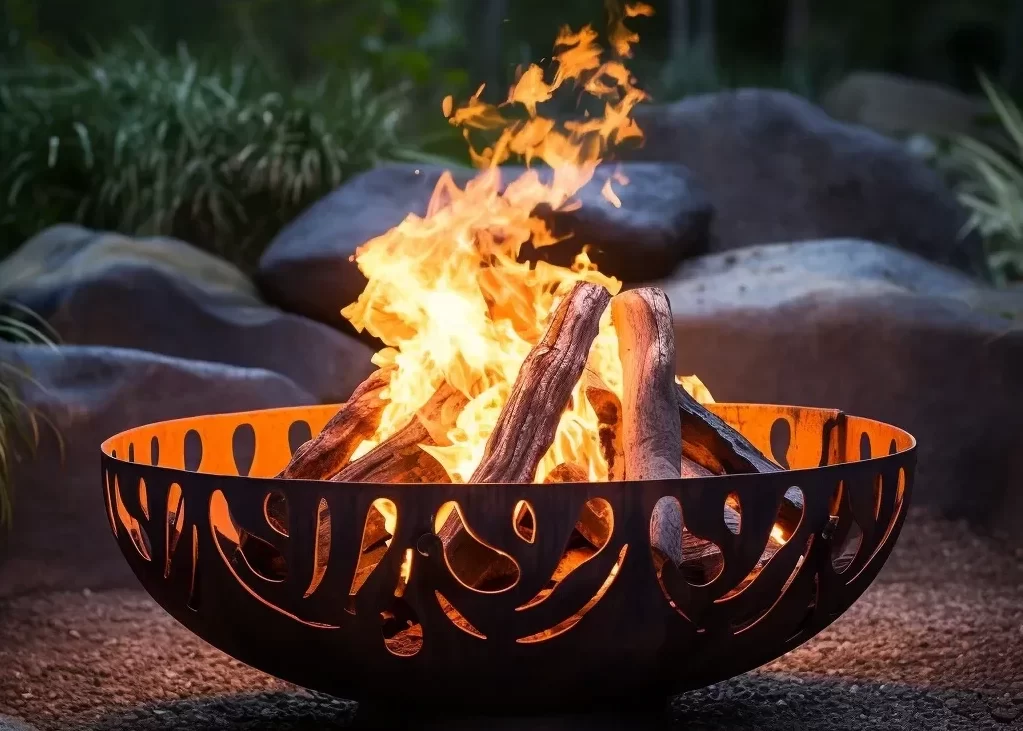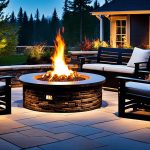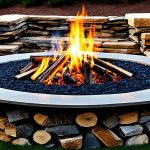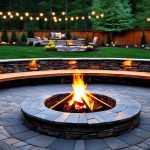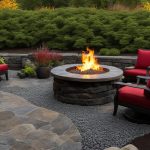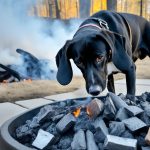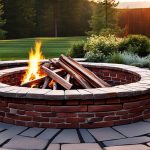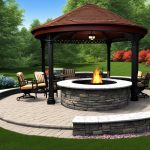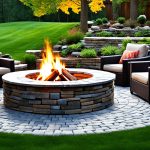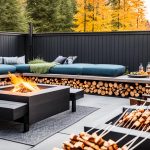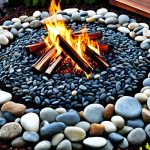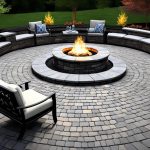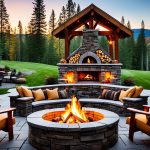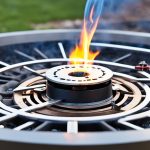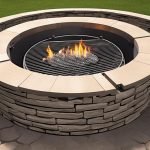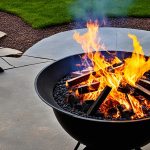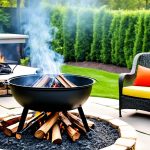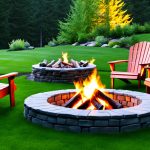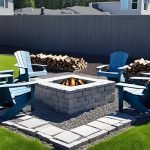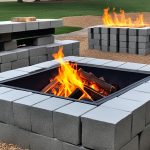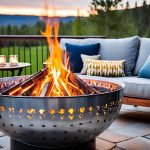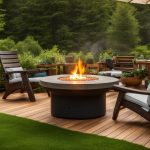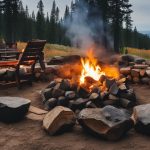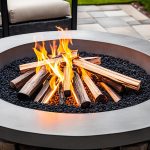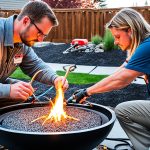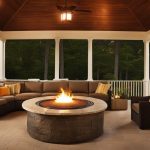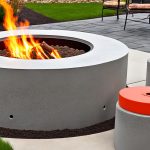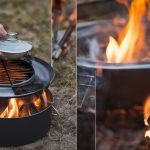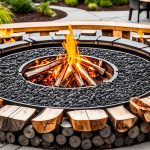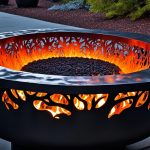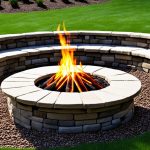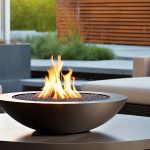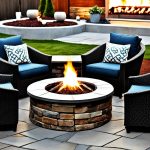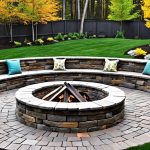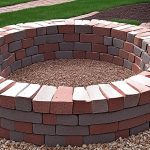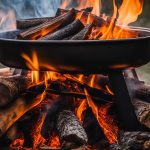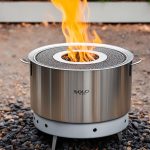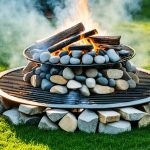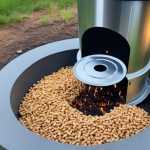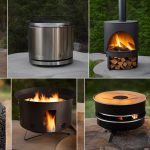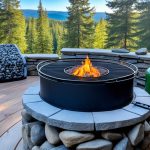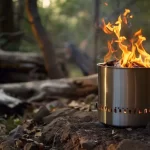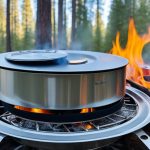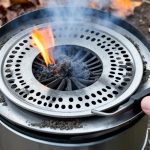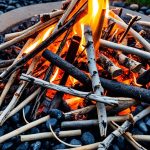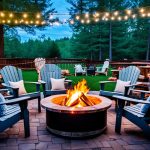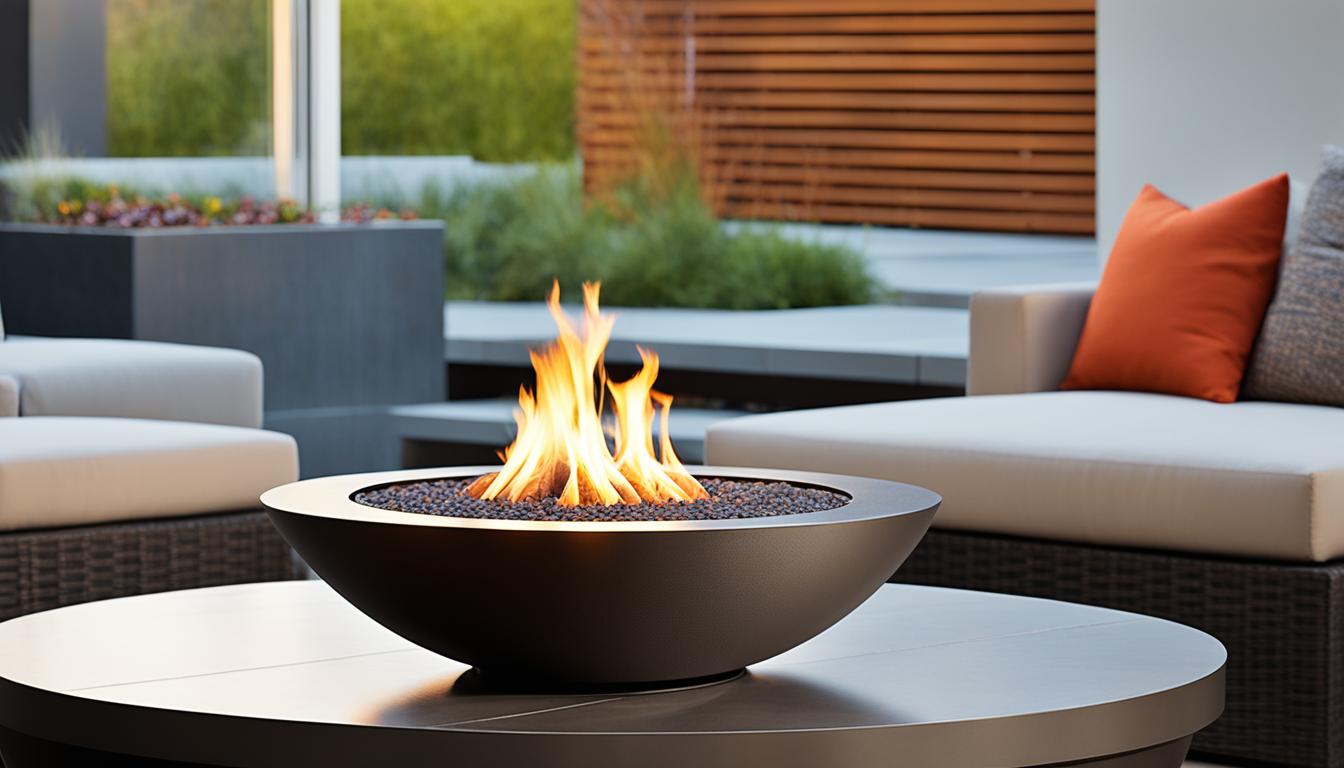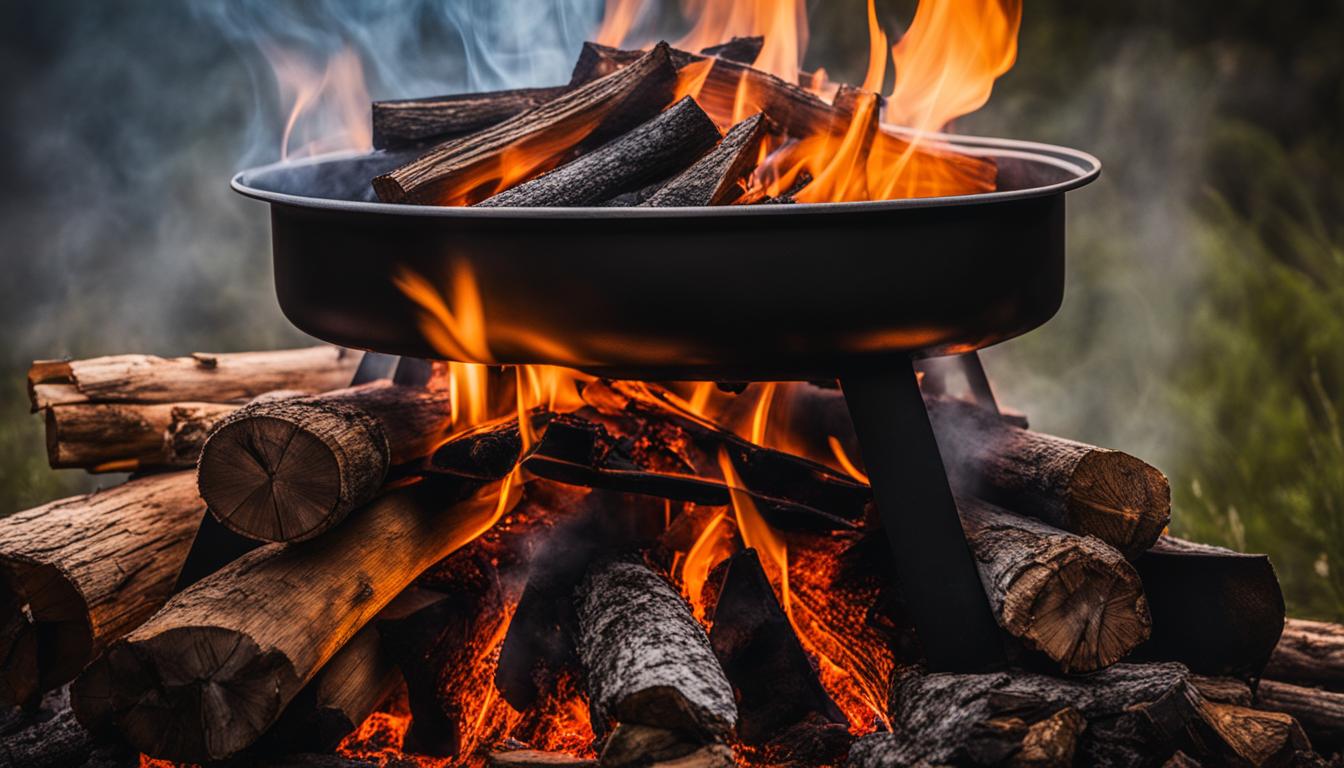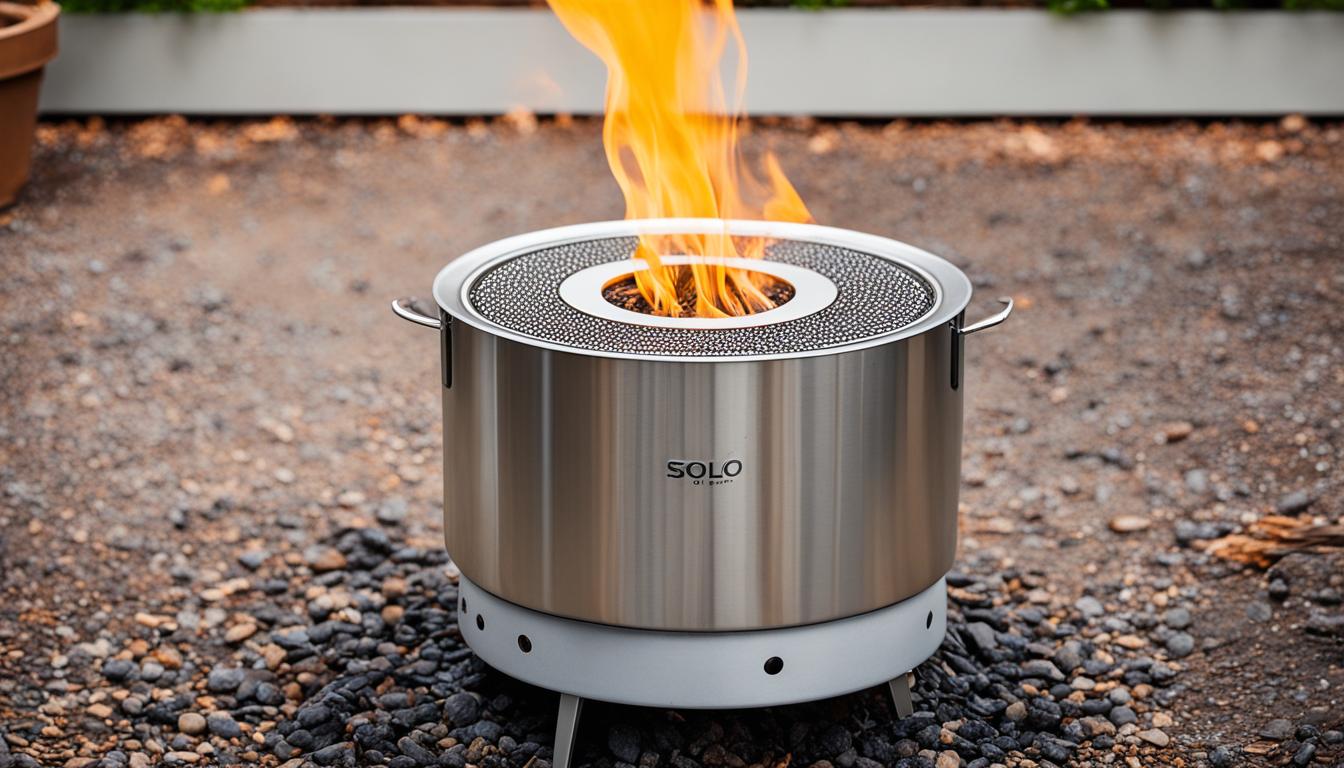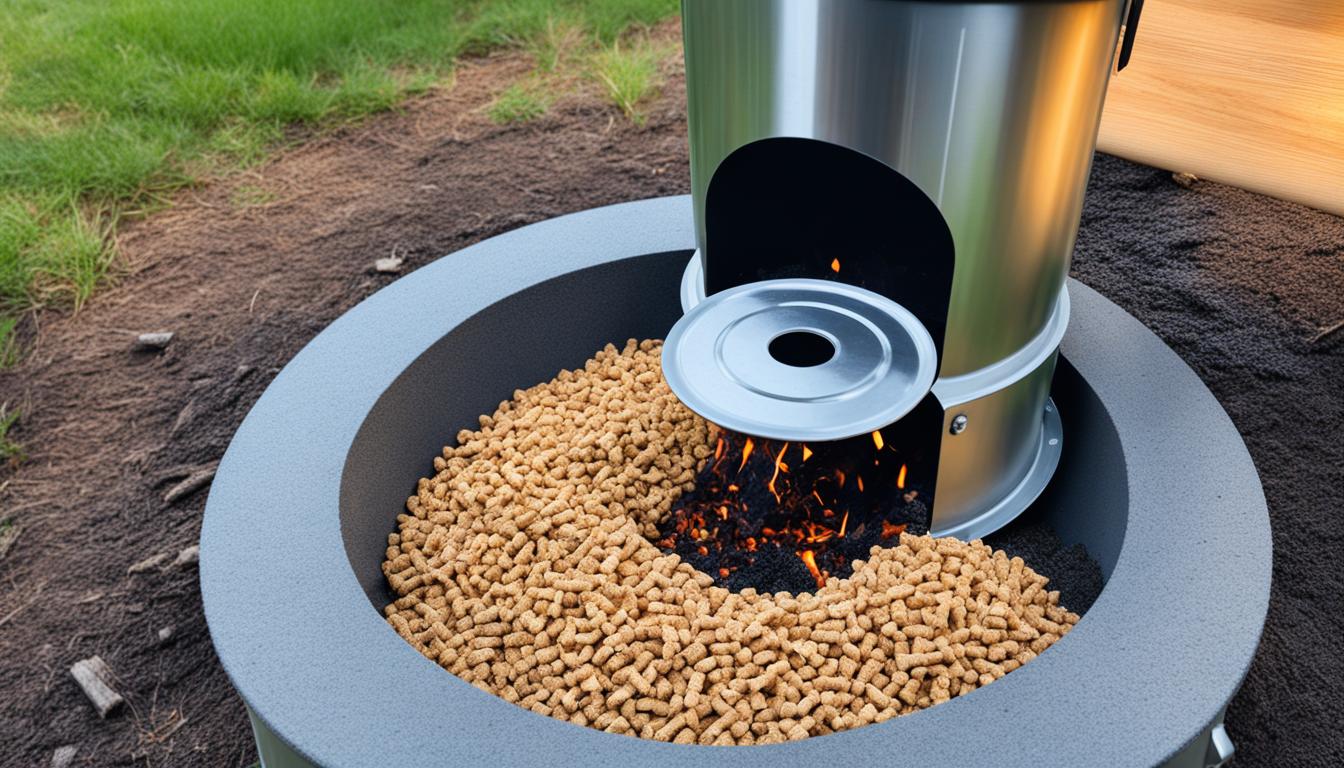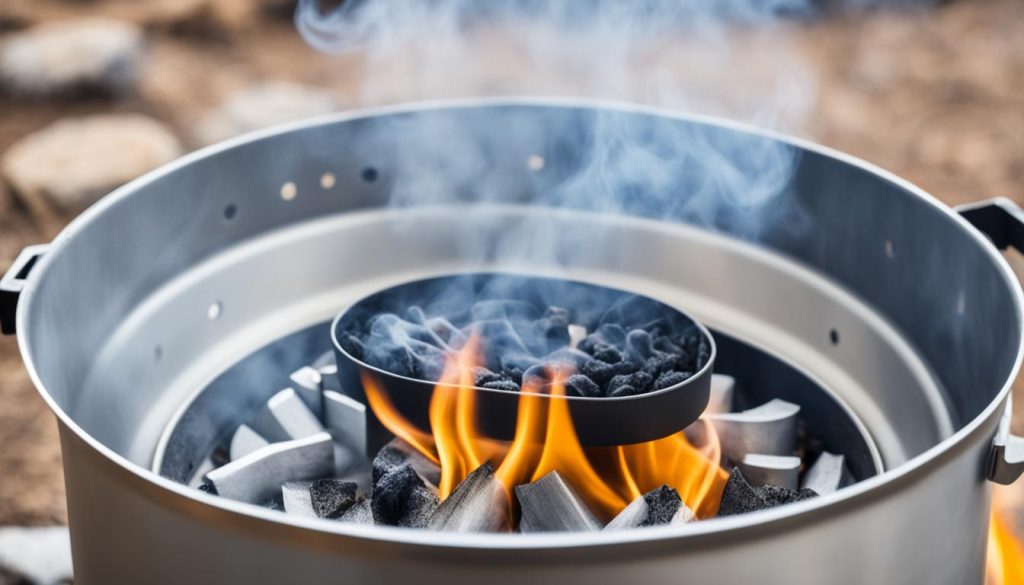
Imagine gathering around a cozy fire pit on a crisp evening, enjoying the warmth and ambience it provides. But suddenly, thick smoke fills the air, stinging your eyes and making it difficult to breathe. We’ve all been there, and it can quickly ruin the outdoor experience we were so looking forward to.
Smoking can be a common issue when using a Solo Stove fire pit, but don’t worry, there are solutions. With a few simple tips and tricks, you can eliminate or greatly reduce the smoke and enjoy a cleaner and more efficient fire every time.
Key Takeaways:
- Smoking can be an issue when using a Solo Stove fire pit, but there are ways to reduce it.
- Choosing the right fuel, building the fire properly, and optimizing airflow are key factors in minimizing smoke.
- Proper maintenance and cleaning of your Solo Stove fire pit can help prevent smoke.
- Some specific firewood options are known for their low smoke output.
- Storing and covering your fire pit properly can help prolong its lifespan and prevent damage.
Choosing the Right Fuel
The type of fuel you use plays a significant role in determining the amount of smoke produced by your Solo Stove. To achieve a smokeless fire, it’s best to opt for hardwoods like oak, pecan, or hickory, as well as harder softwoods such as juniper and cedar. These types of wood are dry and seasoned, which helps reduce smoke.
Avoid using damp or unseasoned firewood, as it can contribute to more smoke. Investing in quality firewood will not only improve your overall outdoor experience but also minimize smoke production while using your Solo Stove.
If you’re looking for convenient and optimized fuel options, Solo Stove offers a range of specially designed firewood accessories. These accessories are crafted to fit perfectly inside Solo Stove fire pits, ensuring optimal airflow and enhancing the smokeless fire experience.
“The type of fuel you use can greatly impact the amount of smoke produced by your Solo Stove.”
Building the Fire Properly
Building your fire correctly is crucial in reducing smoke while using your Solo Stove fire pit. By following these simple tips, you can enjoy a smokeless fire pit experience.
Start with Kindling and Small Logs
Begin by using dry kindling and small logs to get your fire started. This helps create a strong and consistent flame.
Move Logs to the Edges
Once your fire has caught and a significant flame has formed, move the logs to the edges of the fire pit. This allows for better airflow and ensures that the fire burns efficiently.
Add Smaller Logs or Chunk Wood into Gaps
To create a hot fire that can burn off any lingering smoke, add smaller logs or chunk wood into any gaps between the larger logs. This helps maintain a consistent and smokeless fire.
Avoid Logs Sticking Out
Make sure that the logs in your Solo Stove fire pit are not sticking out of the burn chamber. This can lead to more smoke as the fire is not properly contained within the designated area.
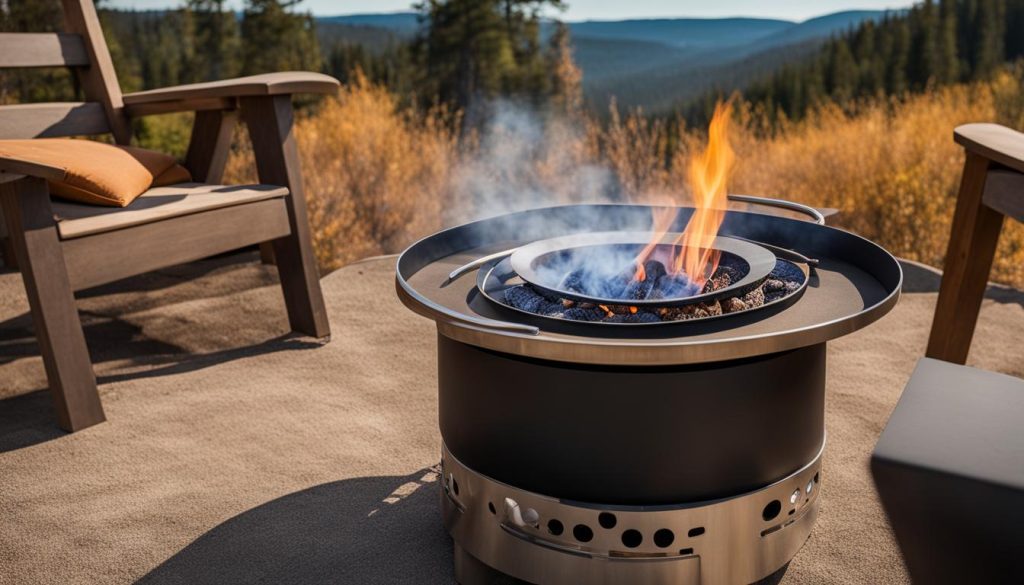
“By building the fire properly, you can ensure optimal airflow and create a smokeless fire. Follow these tips to enjoy a cleaner and more enjoyable outdoor experience with your Solo Stove fire pit.”
For a quick reference, here is a table summarizing the tips for building a smokeless fire:
| Steps | Description |
|---|---|
| Start with kindling and small logs | Creates a strong and consistent flame |
| Move logs to the edges | Improves airflow and ensures efficient burning |
| Add smaller logs or chunk wood into gaps | Promotes a hot fire to burn off lingering smoke |
| Avoid logs sticking out | Prevents smoke by containing the fire properly |
By following these steps and optimizing your fire-building technique, you can significantly reduce smoke and enjoy a smokeless fire pit experience with your Solo Stove.
Optimizing Airflow
Proper airflow is essential for maintaining a smokeless fire while using your Solo Stove fire pit. The Solo Stove is designed with a 360° airflow system that helps reduce smoke and increase efficiency. To optimize airflow and minimize smoke, consider the following tips:
- Regularly empty the ash pan: Ash buildup can block the air circulation in the fire pit, leading to increased smoke production. By emptying the ash pan regularly, you can ensure proper airflow and a cleaner burn.
- Flip the flame ring: Flipping the flame ring upside down can help direct the hot air towards the fire, promoting the burning off of excess smoke. This simple technique can significantly reduce smoke output.
- Consistently add fuel: Maintaining a hot environment by consistently adding fuel to the fire helps improve airflow and reduce smoke production. Keeping a steady supply of well-sized logs or wood chunks ensures a continuous, efficient burn.
- Position logs below the secondary burn holes: Placing the logs slightly below the secondary burn holes in the fire pit encourages better airflow. This positioning allows the secondary burn holes to effectively ignite the smoke, resulting in a smokeless fire.
By implementing these airflow optimization techniques, you can enjoy a smokeless fire and enhance your outdoor experience with the Solo Stove fire pit.
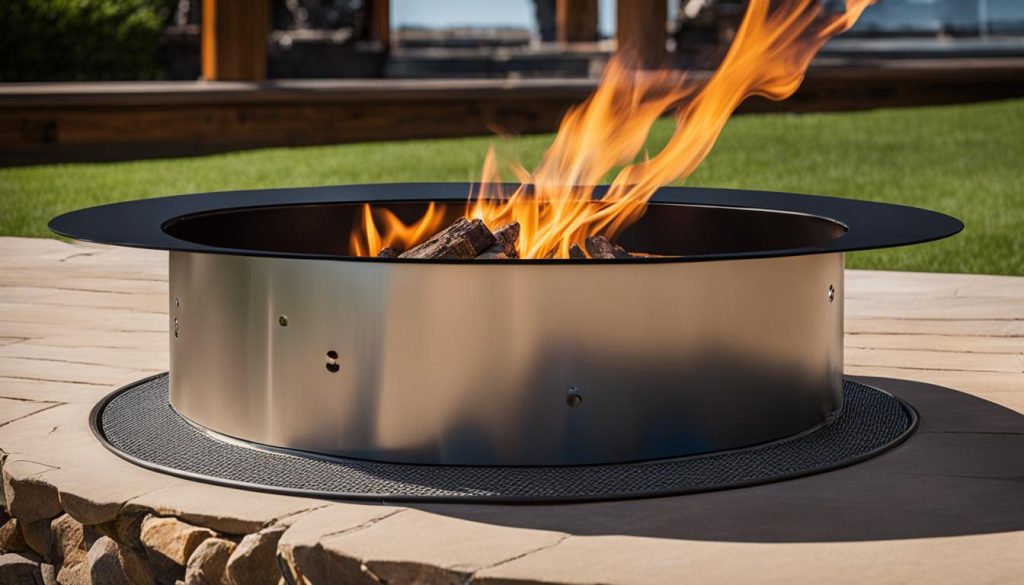
“Proper airflow is key to achieving a smokeless fire with your Solo Stove. By following these tips, you can optimize the circulation of air within the fire pit and significantly reduce smoke production.”
Maintaining and Cleaning
Proper maintenance and cleaning of your Solo Stove fire pit can also help reduce smoke. After each use, make sure to empty the ashes and store the fire pit in a cool, dry location. It’s normal for a patina to develop on the fire pit’s stainless steel surface over time, but you can use a product like Bar Keepers Friend to polish it if desired. If you plan on storing the fire pit outdoors, covering it when not in use can help protect it from the elements. Using a stand is recommended if you want to use the fire pit on a heat-sensitive surface.
Regular Cleaning for Optimal Performance
Keeping your Solo Stove fire pit clean is essential for maintaining its performance and reducing smoke. After each use, be sure to remove any remaining ashes from the burn chamber. This will prevent ash buildup, which can obstruct airflow and lead to smoky fires. Use a small shovel or ash pan to safely collect and dispose of the ashes.
Proper maintenance and cleaning of your Solo Stove fire pit can help extend its lifespan and prevent performance issues. By investing a few minutes after each use, you can ensure that your fire pit continues to deliver a smokeless, efficient fire every time.
Polishing the Stainless Steel Surface
Over time, a patina may develop on the stainless steel surface of your Solo Stove fire pit. This is a natural process and does not affect the performance of the fire pit. However, if you prefer a polished look, you can use a product like Bar Keepers Friend to restore the shine. Simply apply the cleanser to a damp cloth and gently scrub the stainless steel surface. Rinse thoroughly and dry with a clean cloth.
Protecting Your Fire Pit
If you plan on storing your Solo Stove fire pit outdoors, it’s important to protect it from the elements. Covering the fire pit with a weather-resistant cover when not in use can help prevent water, dirt, and debris from entering the burn chamber. This will help maintain the fire pit’s performance and reduce the risk of smoke caused by damp wood or clogged airflow.
Best Firewood for a Solo Stove Fire Pit
While various types of hardwoods and harder softwoods are recommended for a smokeless fire, some specific firewood options are known for their low smoke output. Here are the top firewood choices for your Solo Stove fire pit:
- Shagbark Hickory: With its high BTU rating and quick coal bed formation, shagbark hickory is an excellent choice for a smokeless fire.
- American Beech: Known for its low smoke production, American beech is another great option to consider.
- Bur Oak: Bur oak also ranks high in BTU rating and forms a hot coal bed quickly, making it an ideal firewood for a Solo Stove fire pit.
- Red Maple: Red maple is a good choice as it burns well and produces minimal smoke.
- White Ash: White ash is another recommended firewood option known for its low smoke output.
Solo Stove also offers their own Juniper firewood, which is kiln-dried and pre-cut to fit their fire pits perfectly. Consider using Juniper firewood for optimal performance and a smokeless fire experience.
Finding the Right Firewood
When choosing firewood for your Solo Stove fire pit, it’s important to consider factors such as BTU rating, moisture content, and burn time. Harder woods tend to produce more heat, while softer woods may cause more smoke. Ideally, select dry, seasoned firewood with a low moisture content to minimize smoke. Avoid using green or wet wood, as it can result in excessive smoke and poor combustion.
Using the best firewood for your Solo Stove fire pit is crucial for achieving a smokeless fire and enjoying a clean, efficient outdoor experience.
Storing and Covering
Properly storing and covering your Solo Stove fire pit can help prolong its lifespan and prevent damage. After each use, make sure the fire pit is cool to the touch before emptying the ashes. Store the fire pit in a cool, dry location to protect it from the elements.
Solo Stove offers a range of accessories designed to enhance your fire pit experience. One such accessory is the Shelter, a weather-resistant cover that provides additional protection for your fire pit. The durable material helps prevent water from pooling on the fire pit, keeping it dry and ready for use whenever you need it.
“The Shelter is a game-changer when it comes to protecting our fire pit. It keeps the rain out and ensures that our Solo Stove stays in great condition.”
– Sarah T., Solo Stove customer
Another option for covering your fire pit is the Lid. This versatile accessory not only protects your fire pit from the elements but also doubles as a table when the fire pit is not in use. Simply place the Lid on top of the fire pit, and you’ll have a convenient surface for drinks, snacks, or even board games.
Comparison of Solo Stove Fire Pit Accessories
| Accessory | Description |
|---|---|
| Shelter | A weather-resistant cover that provides protection from rain and other elements. Keeps your fire pit dry and ready for use. |
| Lid | A versatile accessory that serves as a protective cover for your fire pit and transforms it into a table when not in use. |
Conclusion
By implementing these Solo Stove smoking tips and following the recommended guidelines, you can significantly reduce smoke while enjoying your fire pit. Remember to select the right fuel, such as dry hardwoods or Solo Stove branded firewood, to minimize smoke production. Building the fire properly, with smaller logs and optimizing airflow, will help create a smokeless and efficient burn.
Regular maintenance, including emptying the ash pan, flipping the flame ring, and ensuring proper log placement, is essential for achieving a clean and smoke-free fire. Additionally, storing and covering your Solo Stove fire pit when not in use will protect it from the elements and extend its lifespan.
With these tips in mind, you can enhance your outdoor experience, create a cozy ambiance, and enjoy the warmth of your Solo Stove fire pit without the nuisance of excessive smoke. Follow these recommendations and make the most out of your Solo Stove for a cleaner and more enjoyable time outdoors.
Recommended
- Buy Solo Stove: Find Your the Best Retailer Online
- Master How to Use Solo Stove – Tips & Tricks
- Understanding How Solo Stove Works | Eco-Friendly Tech

Otis, 52, embodies a lifetime of adventure, from the rugged hills of the USA to serene camping spots worldwide. His passion for the outdoors isn’t just a hobby; it’s a way of life that includes hiking, camping, and exploring the unknown. With decades of experiences under his belt, Otis shares his adventures and lessons learned through Natural Fire Pit. Beyond fire pits, his expertise in outdoor living, from setting up the perfect tent to finding off-the-beaten-path travel destinations, guides fellow enthusiasts. Follow Otis’s journey for a deeper connection with nature.
